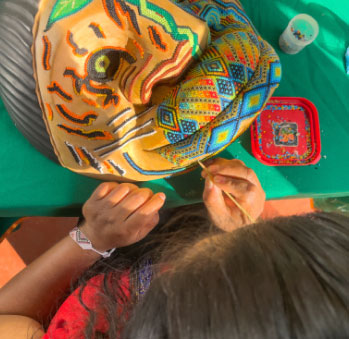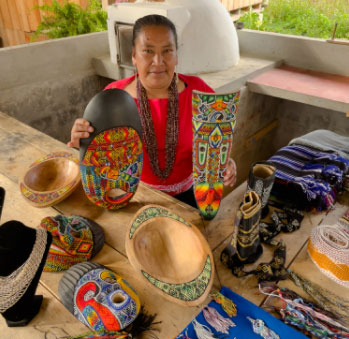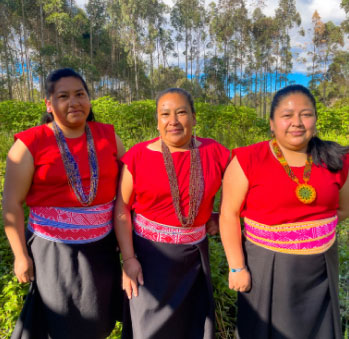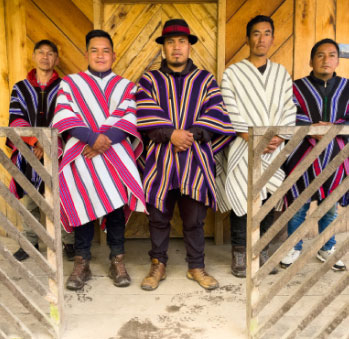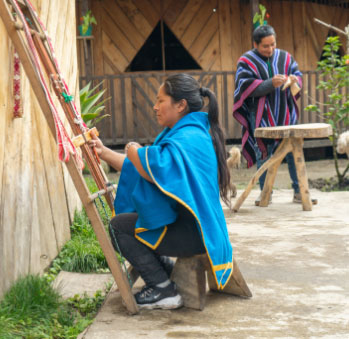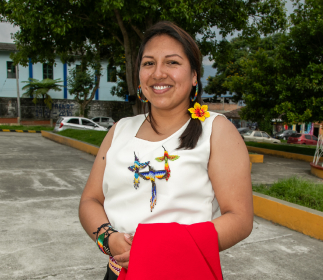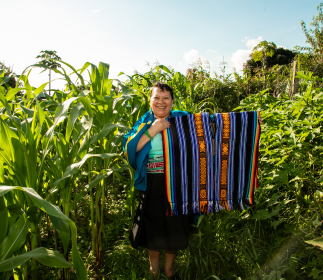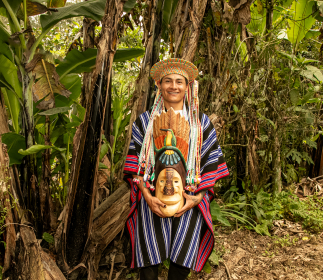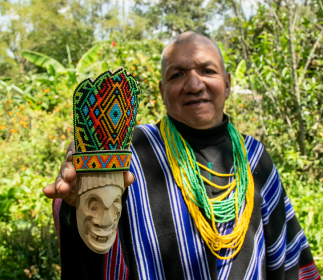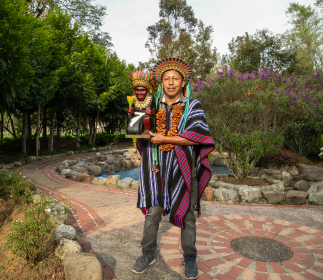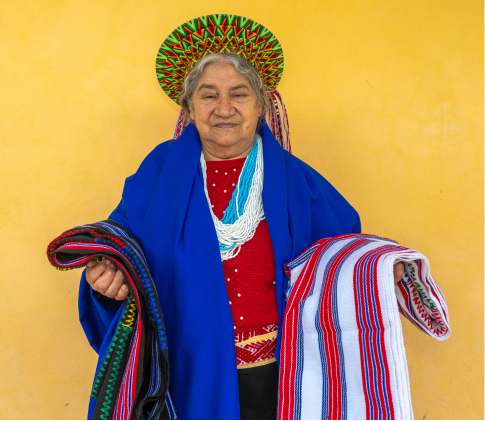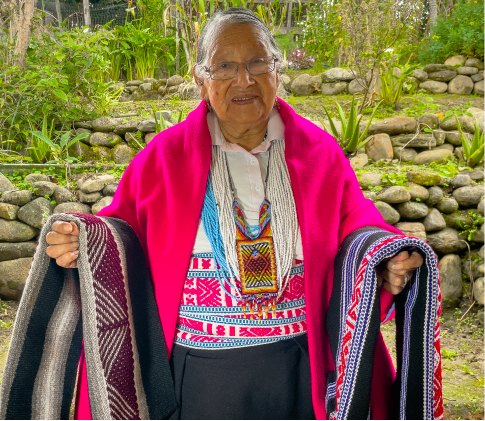Eisenhower Ramos y Teresa Jacanamejoy
Workshop: Curarte
Craft: Enchapados y recubrimientos y tejeduría
Trail: Putumayo Route
Location: San Francisco, Putumayo
SCHEDULE YOUR VISIT
Resguardo Suace grande, vereda la menta
3209040765
curartesibundoy@gmail.com
@artesanos.curarte
He speaks wisely even though he is barely in his twenties. It must be that his experience living in a large Kamentsá family has taught him a great deal of knowledge about every part of life. Eisenhower is son of Teresa; cousin of Olga, Hernán, and Wilson; nephew of Arturo and Miguel; and grandson of Josefa. The latter was a midwife, and so helped deliver him into the world. She later planted his placenta close to his birthplace, which strengthened his ties with the Sibundoy Valley.
He speaks passionately of his family because he knows that he is one of its members and he will inherit their legacy. He is also aware that whenever he speaks of them, he has the burden of accurately representing the entirety of the Kamentsá community, whose name translates to English as follows: “people from this land with their own thought and language.” He says that part of his community’s nature consists of sharing and preserving language. This envelops the idea of healing oneself and one’s family —which are constituent parts of the community itself— as a gesture of caring for the other. Healing can refer to relieving our bodies’ pain, of course, but it can also allude to connecting our thoughts with our hearts and souls.
Moreover, it is in this context that weaving acquires a specific meaning. To use one’s hands is to weave from the ainanokan, from the heart, because everything we are and all we can ever hope to give or receive has its place in there. Weaving connects people and ideas. Weaving is a tool for learning and teaching. Weaving is a way in which stories are remembered and passed on. Weaving exalts memories and projects futures. Weaving is something around which people gather. All of this resulted in the journey Eisenhower and his family embarked on when they established the Curarte initiative back in 2016. With this project, he intends to use his art to heal people, be it through medicine —specifically involving the medicinal consumption of yagé—, music, or chaquira-bead crafting. They want their project to become a school of thought.
For them, combining these three fields is crucial for finding balance in life. His mother, Teresa, is a leader of the Kamentsá community. So were his grandfather and uncles, all of whom were taitas: traditional healers who incorporate the intake of yagé into their healing rituals. Likewise, his mother founded the Cooperativa de Cultivadores de Plantas Esenciales y Aromáticas del Putumayo (the Putumayo Essential and Aromatic Herbs Farmers’ Cooperative) more than 18 years ago. Everybody believes that sowing knowledge within the community’s younger generations can lead them to find ways of staying in their land and practicing their beliefs and vocations without having to leave Putumayo due to a lack of opportunities.
Eisenhower is aware that the overwhelming nature of globalization threatens the survival of his people’s customs. Nonetheless, he does not want to view this phenomenon in a negative light. Rather, he wished to understand it and the fact that it is here to stay. He wants indigenous communities to become stronger by mixing their ancestral heritage and the incredible speed of western practices. He knows that therein lies the power that the newer generations need to harness. To witness him is to feel his conviction and know that their legacy will be safe.
Craft
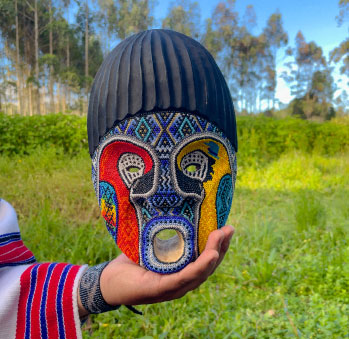

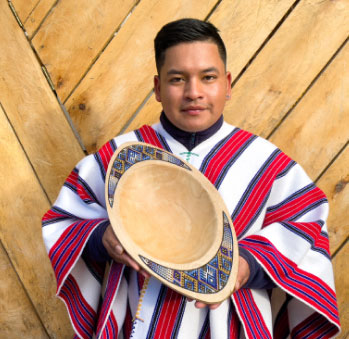
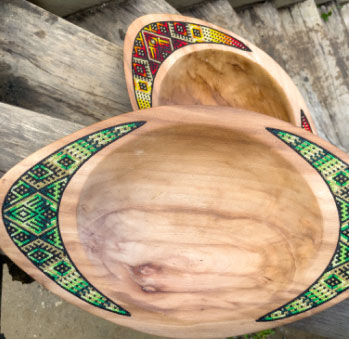
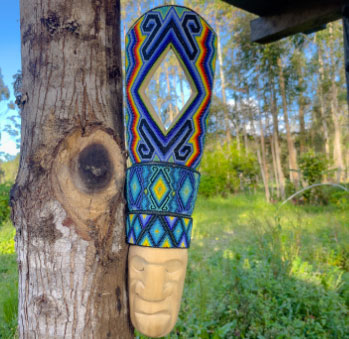
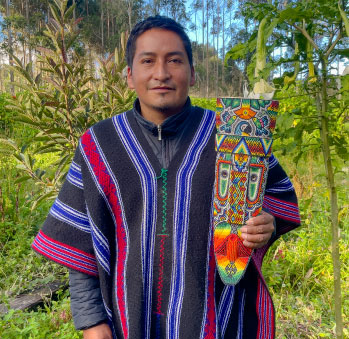






Artisans along the way
Artisans along the way
No puede copiar contenido de esta página










































